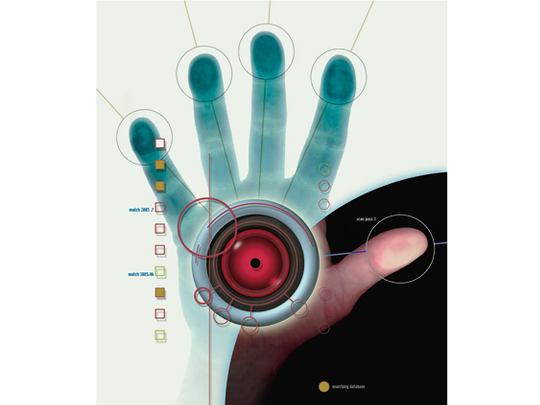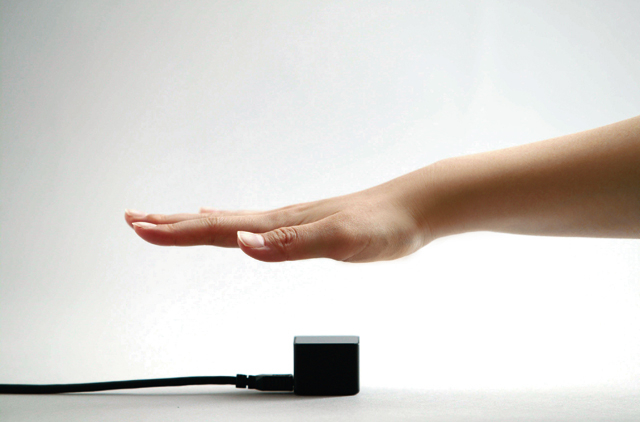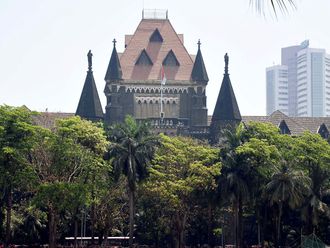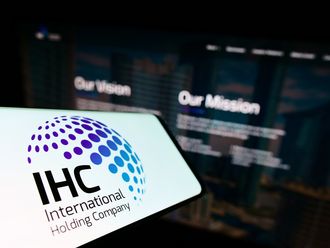
It's all part of a biometric technology revolution that's changing the way access and security systems for offices will function. Fingerprint access is just one option. With offices becoming more mobile and executives not staying chained to desks, iris-, voice- or palm vein-based identification systems are also ensuring that access control and timekeeping systems are more secure than ever. And with biometric technology becoming cheaper and easier to implement, companies across the UAE are increasingly taking part in pilot projects that allow the use of your voice, the iris of the eye or the veins in the palm to monitor access control and time management.
While an iris scan seems rudimentary to many, palm-vein-based access translates into a registered user holding his palm above a tiny device to gain entry. Similarly, voice-based access systems can ensure security and ease of use, where the user only has to talk to enter.
"Imagine a scenario where you lock/unlock the doors of your office, car, or switch on a laptop or mobile with your voice. We have many products, some are already being used by our customers worldwide, while others will be rolled out soon," says Dr Tariq Habib, CEO, VoiceTrust, a provider of voice biometrics based products and solutions. VoiceTrust, he says, is involved in several pilots of its products and applications in the UAE.
Early adapters
Governments and security agencies are the first users of biometric technology at airports, sea ports and border posts. Now, the corporate world is learning to use them not just in perimeter security, time management and access control, but also as a means to protect access to corporate networks, PCs and classified information. Worldwide revenues from the biometric market are set to treble to $14 billion (Dh51.4 billion) by 2015, according to 2010 estimates from business intelligence provider Global Industry Analysts.
"There is a trend to work remotely from home or from a hotel. Most companies want to provide ease of use and access to corporate resources and make it easy for the user, allowing you into the network with one flick of a button," says Tareque Choudhury, Head of Security, BT Global Services, a provider of networked IT services. Currently, companies in the UAE rely on chip-based technologies such as those mounted in access cards and in Dubai's Salik toll tags. "More and more one can see one chip being used to identify, access a network, a building, a laptop or a personal computer," he says.
Touch and see
BT Global Services provides iris-based access systems that Choudhury says are more popular in the government and defence verticals. Most UAE residents are familiar with the technology, what with the country's airports being armed with these sensors. A newer version includes an iris scanner that can work from two metres away, quite like Tom Cruises's The Minority Report, but the cost is prohibitive, prompting corporate users to look for other solutions.
"An iris scanner costs about $35,000 a machine. If you have multiple access points the cost of implementation can go really high," says Prãkash Ivaturi, Founder and COO, iD1 Global, a systems integrator specialising in the development and implementation of identity management solutions and services.
The simplest, almost ubiquitous application of biometrics today is fingerprint access used in offices across the UAE. A regular fingerprint-based access device costs about $800. While it's more cost-effective than its newer cousins, as prevalent as the fingerprint monitor next to the office door is the hand sanitiser meant to allay fears on germ exchange. Technically speaking, the fingerprint is losing its status as the best means of identification due to its limitations.
"There is a connotation of police records with fingerprints. And it works best with people between 15 and 60 years or so because prints are still developing until 15 and start to wear off after 55-60 years. With people who work with their hands, fingerprint recognition is not the most reliable," says Ivaturi, explaining the need to look beyond fingerprinting.
The alternatives are many. Showing off the contactless palm vein recognition technology, Ivaturi says, "Companies could actually do it today. We have two or three pilots already underway in the UAE. Companies that are doing building management systems want to deploy these," he says.
Brought out by Fujitsu in 2005, the newer version of this device is about the size of an ice cube and can be attached to everything from a laptop (via USB) to a security gate and an ATM machine. The technology, packaged in TruSec software by iD1 Global, relies on the fact that the haemoglobin profile of each individual is different from another.
The scope for its use is immense — loyalty programmes, hospitals that need to guard patient data, banks customers and employees can all be a part of a unique access system. It is already in use in Brazil, Japan and Turkey.
Brazil's second-largest bank, Bradesco, for instance, has installed these inch-and-a-half palm vein recognition devices into about 4,000 ATM machines, doing away with ATM pins and passwords.
At about $3,500 a device, for newer, even smaller ones, iD1 Global is confident that it will take off successfully in the region. "It's simple to use in places such as health clubs or offices. If you quit, all one needs to do is delete the palm-vein data from the system and access is denied," says Ivaturi.
Take voice, for instance. "The human voice is more complex than other biometrics like fingerprints. Voice is created and generated by 14 different organs in our body," says Dr Habib.
IBM already provides VoiceTrust password reset service where a user may recover his forgotten or mistyped password by simply calling the service, which authenticates him via voice biometrics and a new password is generated and communicated to the user within the same call.
Dr Habib says that applications innovated at VoiceTrust include one which can detect emotion and another which can identify whether audio received on a call is from a live person or a recording.
"Emotion detection is an emerging field where research is going on. In the not too distant future we'll have full emotion detection available while simply talking to a person on the phone. Our detector can tell us if the other person is sad or happy, distressed or angry. Currently, VoiceTrust technology can successfully detect six emotions," says Dr Habib, in an interview with GN Focus.
Another voice-based biometric application is Proof-of-Life, with prospective ideal users including banks offering secure online and mobile banking, call centres greeting customers after identifying their voices, or telecoms offering mobile top-up with just a call.
One application, Dr Habib says, is for pensioners. "This is for governments and other entities making payments to citizens while ensuring that payment is only made to those who are alive such as pensioners. Currently, pensioners have to prove every year that they are alive to receive their monthly pensions.
With Proof-of-Life, this will be automated for the rest of their lives as they would just need to make a call and speak into our system for a few seconds and upon successful verification, receive their payments without leaving the comfort of their homes," says Dr Habib.













